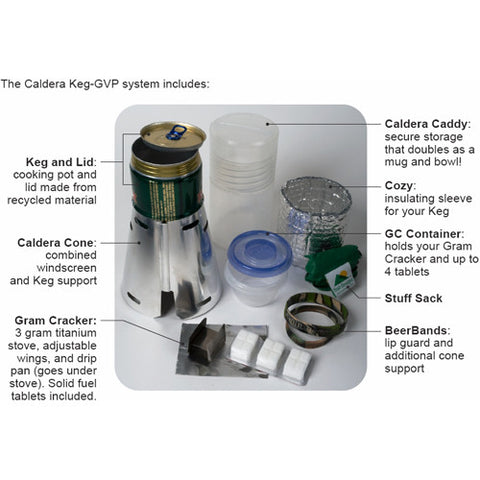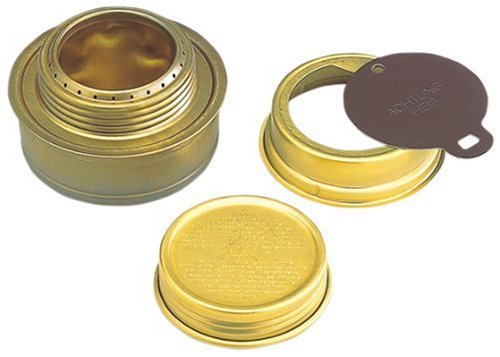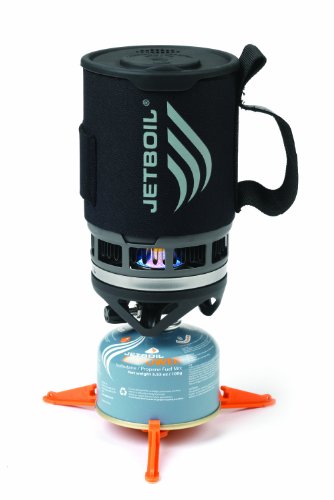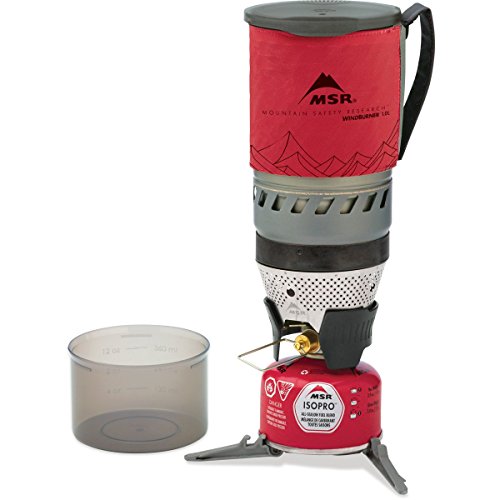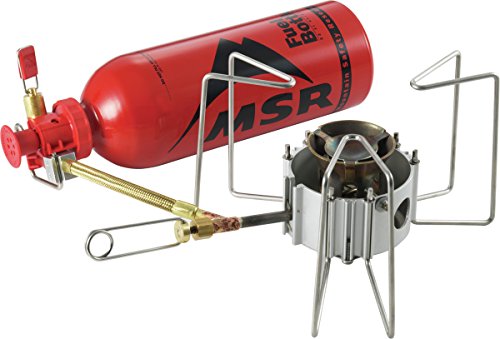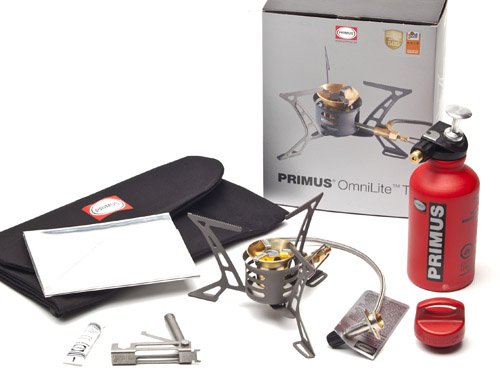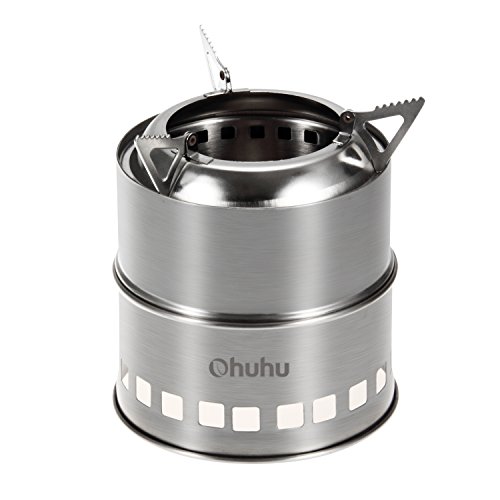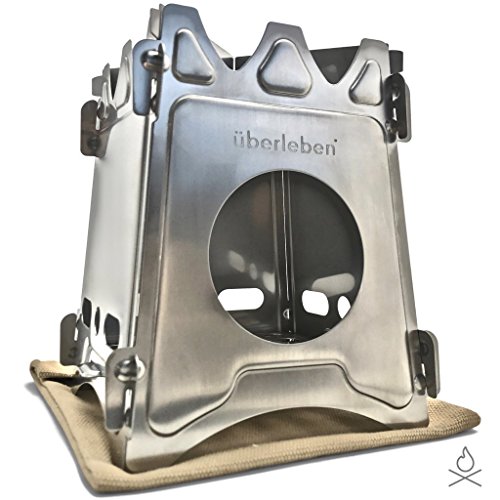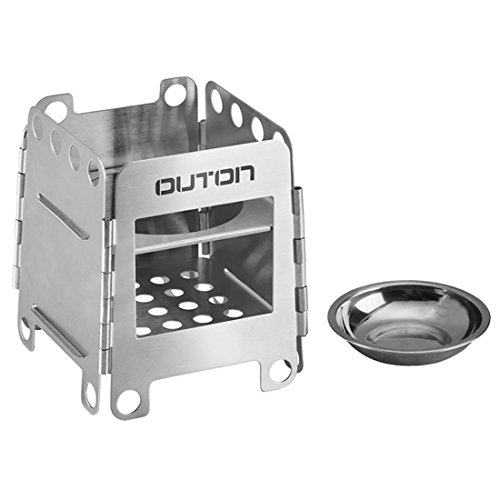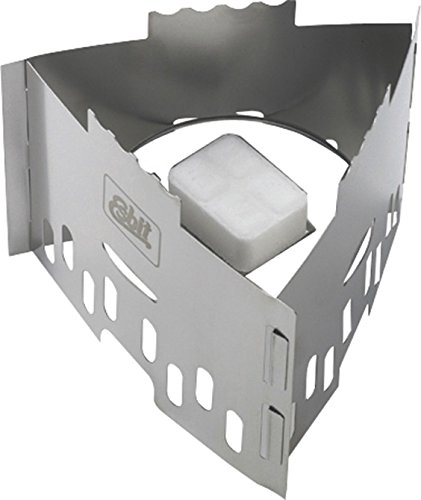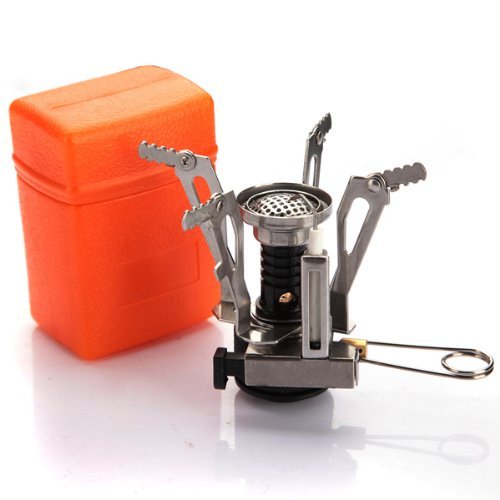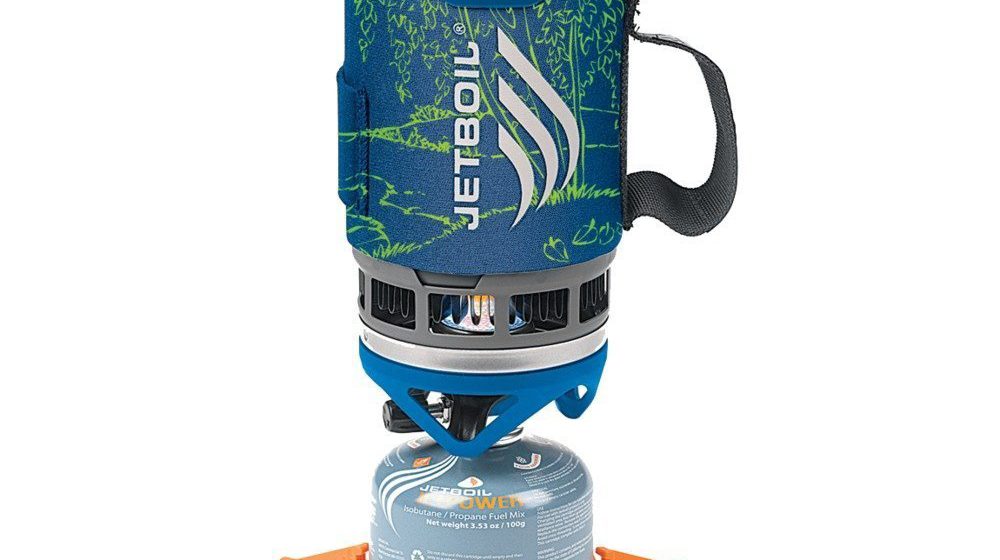
(Updated for 2018)
Boy, this is one saturated market.
There’s a virtual smorgasbord of backpacking stoves available today, which makes finding the ‘best’ one kind of a pain.
More...
Now, maybe you already have an idea of what stove you want. That’s awesome…but I bet you’re in the minority. There are so many backpacking stove categories out there (from woodburning to ultralight), that just figuring out what type to pick can be frustrating.
So this guide is designed to help you make the right choice.
Some stoves do one thing exceptionally well. This might include being extremely lightweight, or extremely easy to use. Ultralight stoves, for instance, are made to boil water and lack functionality to simmer, bake, or cook.
Other stoves are a balance of all asset classes, they’re usable in extreme weather, reliable, and durable. These stoves are meant to put out enough heat to cook group meals or be fine-tuned to simmer or bake a delicate meal in the backcountry.
Neither type of stove is, necessarily, the best ultimate solution for all situations but we’re going to break our best backpacking stoves of 2018 into three categories to help you decide what’s best for you!
But first, here's a quick summary of all the stoves we'll be covering in this guide:
Best Backpacking Stoves 2018 | Price | Weight | Rating | Notes |
|---|---|---|---|---|
$59.95 | 5.18 oz | Our top pick (again) for the best ultralight backpacking stove. | ||
$14.99 | 3.84 oz | Most versatile and user friendly alcohol burner | ||
$79.95 | 12 oz | Compatible with all Jetboil accessories. Able to store a 100g Jetpower fuel can | ||
$150 | 15.25 oz | Integrated System: Compact, all-in-one stove and cookware solution features a secure-locking pot/personal eat-and-drink mug with cozy | ||
$120 | 17.8 oz | Burns white gas, kerosene, unleaded auto fuel, diesel, and jet fuel. | ||
$178 | 12 oz | Lightweight, durable OmniLite Ti burns just about everything but water, folds into tiny size | ||
$18.99 | 14.2 oz | Ohuhu Backpacking Stove uses twigs, leaves, pinecones and wood as fuel | ||
$38.00 | 14.5 oz | Fueled entirely by organic matter (twigs / sticks, bark, moss, pine needles, etc.) | ||
$13.99 | 7.2 oz | Small wood burning camping stove comes with a plate(Diameter of Hole: 2.76") for spirit burner and a alcohol dish | ||
$24.44 | 3.3 oz | Use with alcohol burner and solid fuel | ||
$8.99 | 3.9 oz | Ultralight canister stove, with piezo ignition, that folds into its protective case |
Let’s first take a quick look at the top backpacking stoves out there and then dig into how to pick a stove and why we decided to include these in our guide.
Best Ultralight Backpacking Stoves
- Lightest Possible Weight
- Primarily Use For Boiling Water
Best All-in-One Backpacking Stoves
- Moderate Size and Weight
- Balance Blends of Needs
Best Backpacking Stoves for Gourmet Cooking
- Larger Stoves For Advanced Meal Prep
- Precise Flame Control
Best Wood Burning Backpacking Stoves
- Don’t Have to Carry Fuel
- Enjoy an Authentic Experience
Best Affordable (Budget) Backpacking Stoves
- Low-Cost Backpacking Stoves
- May Have to Compromise on Features
Tips for picking the right backpacking stove
We’re going to make sure you really understand what it takes to pick out the best possible stove for backpacking today!
Types of Backpacking Stoves
There are three main categories of backpacking stove:
Canister Stove
Canister stoves us a pre-pressurized mix of fuel in a disposable can to power your stove. These stoves are simple, effective, and efficient. Here are the main pros and cons:
Advantages
Disadvantages
Canister stoves are great solutions for beginner hikers who need a simple all-in-one solution for boiling and cooking in the backcountry.
Liquid Fuel Stoves
These stoves include some of the oldest and most tested name brands in the industry and are highly versatile and robust solutions for backcountry cooking.
Liquid fuel stoves use, most commonly, white gas in a standalone bottle which is pressurized by the user. This fuel is then supplied to the stove through a series of valves and often requires a (sometimes) difficult process to ignite and operate.
Advantages
Disadvantages
Liquid fuel stoves excel in large group backpacking where gear is shared among a large number of hikers as well as extreme environments where they’re more reliable and efficient than other options.
Ultralight Stoves
This category includes all the unconventional options which gram weenies (myself included), seemingly alone, love to tinker with.
These stoves are sometimes difficult to find and purchase, often consume strange fuel sources, and frequently are more difficult to operate than other solutions.
Then why use them? Because some of these solutions weigh less than an ounce and are smaller than a tin of breath mints.
We’re going to include alcohol stoves in this section even though they could *technically* be called liquid fuel stoves. It makes more sense to have them here.
Solid Fuel Stoves
This includes Esbit stoves and wood burning stoves. These stoves are usually made of titanium and are usually extremely simplistic, based on very basic chemistry and physics.
Esbit is a solid fuel tablet which contains extremely high levels of potential energy and, when burned, releases huge amounts of heat for its size and weight.
Wood burning stoves are very small twig-burning stoves meant to reduce fuel weight carried in the pack by using forest refuse to heat your water.
Advantages
Disadvantages
Alcohol Stoves
Alcohol stoves are, in many ways, a liquid fuel stove. Users of these stoves carry a container of 100% alcohol which is then added to tiny little stoves and used solely for boiling water.
These stoves can epitomize ultralight and ultra small. Easily weighing less than an ounce, many of these stoves can be built at home out of an old beer can.
Advantages
Disadvantages
Weight
Weight is obviously a factor in stove choice. If you’ve followed the article up until now you will understand which types of stove lend themselves to heavier or lighter options.
Remember that sometimes weight can be divided among members of a group which will change the equation… literally.
Flame Control
Simmering, cooking, or baking all require precise flame control.
See the headings above which illuminate exactly what type of stove will be best for good flame control and why. Speaking broadly flame control will be as follows from best to worst:
- Liquid Fuel
- Canister
- Solid Fuel & Alcohol
Extreme Conditions
Extreme elevation or cold temperatures will render certain stoves less efficient than others. If you’re going in to either or both of these conditions then you’ll want to prioritize as follows (with #1 being the best choice):
- Liquid Fuel
- Solid Fuel & Alcohol
- Canister
Liquid fuel and solid fuel / alcohol stoves can swap places for first choice depending on your priorities. Both stove types handle extremes well.
Wind
Wind really shouldn’t be a factor because windscreens need to be used with all stoves at all times.
Windscreens massively improve efficiency and performance and are vital to effective use of stoves. Choosing a cooking location which is as sheltered from the wind as possible will also help and should be done regularly.
Best Ultralight Backpacking Stoves 2018
OUR TOP PICK FOR 2018
Weight: 5.18oz
When we wrote this article in 2016 this stove was our top ultralight pick. And today, it is still the best single ultralight stove on the market in 2018 -- in my opinion. Here's why:
The Caldera Keg solves several of the common drawbacks of ultralight stoves by:
- Providing a windscreen which seamlessly integrates with the pot and is designed for efficiency
- The windscreen doubles as a very sturdy pot holder… great idea!
- The pot is made from a Foster’s can… my personal favorite ultralight pot solution (though not proprietary to Trail Designs)
- Providing a lightweight, rigid carry case to protect the lightweight stove components (a worthwhile trade-off in my experience)
Half an Esbit tab can bring two cups of water to a boil which is more than enough for any freezer bag cooking recipe. Lightweight, efficient and cleverly designed -- the Caldera Keg is still the best backpacking stove on the market in 2018.
Weight: 3.84oz
This commercial adaptation of the classic Fancy Feast stove is efficient, well loved, and features several notable improvements. While it’s extremely lightweight and affordable, it’s also rocking a few critical upgrades.
These stoves burn denatured alcohol or the yellow bottles of Heet fuel additive available in any gas station (also denatured alcohol). There’s a simmer lid, with a simple hinged aperature that allows for some rudimentary adjustment of flame output. Most alcohol stoves don’t have any flame adjustment.
There’s also a threaded cap for sealing the stove when not in use. That means if you don’t burn all of the fuel in the stove, you can save it for next time. This is actually an improvement over many alcohol stoves where a lack of lid means all the fuel must be burned each time.
Overall this is inarguably one of the cheapest, most easily available alcohol stoves with many convenient, if not critical, features.
Best All-in-One Backpacking Stoves
Weight: 12oz
If you’re looking for the single easiest buy-and-go solution for backpacking stove cooking you’ve found it. The Jet Boil system is well loved because of its efficiency, simplicity, and very low learning curve.
Integrated heat dispersing fins help improve fuel efficiency and boil times. A built-in insulated pot keeps your warm drinks hot for a good long time. Built on the test convenience of canister stove systems, this is a great solution for 90% of backpackers.
Pick up one of these little Jet Boils and you’ll never get lonely on the trail because everyone and their brother will be carrying the same stove.
Just enough room to cook a small meal or easily heat up your morning coffee means this system is a good balance between a water-boiling system and a cooking-focused system.
Weight: 15.25oz
MSR is manufactured by Cascade Designs, a company which demands respect in the industry. Cascade is known for quality design, construction, and customer support. You’ll be hard pressed to steer wrong with a Cascade product.
The WindBurner stove is an obvious all-in-one system designed to compete with the Jet Boil.
This stove is virtually untouched by any outside weather including extreme wind, rain, snow or other imaginable violent weather.
Designed so you can pack away your canister fuel and accessories inside the pot when not in use, this improves space efficiency in the pack.
Best Backpacking Stoves for Gourmet Cooking
One of the coolest things about this stove (other than the noise it makes in operation) is that you can burn virtually any liquid fuel in it. White gas, gasoline, kerosene, diesel, or jet fuel. Burn ’em all.
It also happens to be manufactured by MSR (remember Cascade Designs?) and has been in wide spread use and refinement for years. It’s a proven stove.
The biggest advantage of the MSR Dragonfly is a double valve system which allows for amazing flame control. These stoves are great for backcountry baking and cooking. Get your gourmet chef hat out and carry it into the backcountry with you when you take the Dragonfly.
Weight: 12oz (excluding fuel bottle)
The main competitor to the MSR liquid fuel stoves, Primus tends to see more widespread use in Europe and MSR in America.
The biggest annoyance when switching between the two is that they both use proprietary fuel pumps and fittings so the only thing you can really swap out is the fuel bottle its self.
The Omnilite TI also works with any fuel common fuel source, much like the Dragonfly.
Ultimately I’d say the decision between the two comes down to where you’re planning to use the stove. In the US you’re more likely to have easy access to replacement parts for MSR products, in Europe you may have an easier time servicing your Primus.
Best Wood Burning Backpacking Stoves
Weight: 14.2oz
Ohuhu might not have been the first on the screen of wood burning backpacking stoves, but they’ve made it easy. Wood burning backpacking stoves have a tough job. They have to be:
- Efficient
- Lightweight
- Safe
A lot of times you can’t just burn debris to heat up your meal – with fire restrictions or LNT principles in effect. But the Ohuhu stove allows a contained, controlled burn that funnels all of the heat up into your pot of water.
Of course, once the first is started you won’t be able to adjust or simmer with it. It’s best for boiling water like many ultralight stoves. But you won’t be using chemicals or gasses in the wilderness! Plus, you don’t have to carry around fuel with you.
Perhaps the biggest shortfall of this wood backpacking stove is that you can’t add fuel once it has been lit and it’s rather bulky when packed.
Weight: 14.5oz
Solving the problem of the first wood burning backpacking stove is this castle-shaped stainless steel tower of flame! Assembled with 5 panels into a wood burning, pot holding stove there’s a large fuel door through which you can continuously add sticks and debris to burn.
Since the weight is practically negligible in difference when compared to the Ohuhu, we’ll call them even on that front.
However, since this stove solves the problem of the Ohuhu stove in that you can add wood while in operation… it earns a big thumbs up for that! It also packs down completely flat for storage and carrying which I like a lot better than the Ohuhu model.
Unfortunately, you’ll also have to shell out a bigger pile of cash if you want one of these compared to the Ohuhu stove. You’ll have to decide!
Weight: 7.2oz
You won’t find a cheaper wood burning stove on our list… or maybe anywhere. So does that make this backpacking stove low quality? Not at all.
Take your pick of Esbit, alcohol, or wood fuel burning in this versatile little companion. The 6-panel design leaves room for burning wood on the bottom where there are tons of air holes to make sure your stove burns hot. Or you can burn Esbit or alcohol in the optional cup that sits higher up.
I love that they managed to also make this stove a featherlight 7.2 ounces which beats all the other wood burning stoves on our list. At that weight, however, I worry about its comparable durability, though Outon claims it can handle up to 20 pounds without buckling.
There’s even a fuel door like the Uberleben so you can add fuel as it burns.
Overall this is the cheapest, lightest stove on our list. For the price and features, it would be hard to argue against it!
Best Cheap (Budget) Backpacking Stoves
Weight: 3.3oz
This stove belongs in the ultralight backpacking category if it weren’t so darn affordable. Made from three pieces of interlocking stainless steel, it acts as a windscreen and pot stand. That’s perfect because it’s meant to go with Esbit solid fuel tablets or alcohol stove internals. I’d recommend Esbit.
Why Esbit? Because it can’t spill, won’t evaporate, and is insanely easy to use. These hexamine tablets burn with the fury of a billion suns and do a great job of boiling water. The pot stand and windscreen help to make the Esbit tabs burn as efficiently as possible while heating up your meals.
This is an ideal inexpensive stove setup for those who like to cook one meal a day and only use their stoves to boil water. It’s dead simple, lightweight, and has a large base of support. Nothing is more annoying than wobbly stoves and spilled boiling water accounts for the greatest number of backcountry injuries each year among backpackers.
Using science and magic, Icetek has managed to produce what might be the most ridiculously affordable and easy to use backpacking stove known to man. In fact, it’s so cheap I would call BS if it didn’t have so many great reviews from happy users.
With a Piezo ignition, you can light the canister stove with just the push of a button. These are convenient because you don’t even need a lighter on hand (I’d take one for backup though because they’ve been known to break).
Canister stoves are controllable, dead simple, and very convenient.
This stove actually comes in cheaper than many ultralight picks, but it does mean you have to carry the largest, bulky metal fuel canisters to go with it. That’s not always a bad thing, though. I’d say about 50% of backpackers use canister stoves like these.
Conclusion
Each type of backpacking stove is right for different circumstances. Remember to choose your stove based on how you plan to use it.
Lighter does not always mean better and often times there’s a balance to be struck between price, weight, size, and use among many other factors.
Don’t hesitate to ask to borrow a friend’s stove if you’re curious about what type of stove works best for you!
Related Posts

